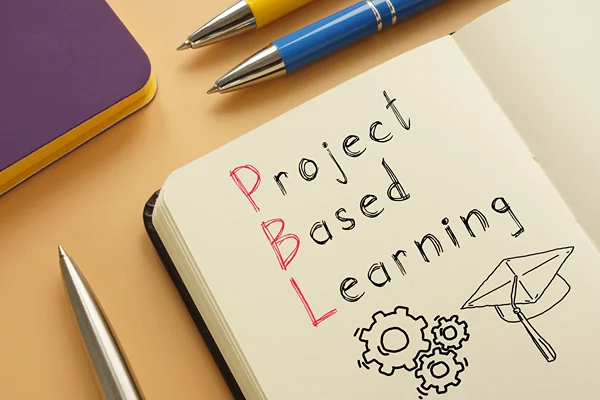Learning Without Bells – How Education Is Evolving at Home
Home schooling has shifted from a quiet alternative to a mainstream conversation about how children learn best. Many families across the United States have turned their dining rooms into classrooms, creating learning environments that match their values and rhythms. California has become one of the most active states in this movement.
Home schooling has shifted from a quiet alternative to a mainstream conversation about how children learn best. Many families across the United States have turned their dining rooms into classrooms, creating learning environments that match their values and rhythms.
According to a 2024 analysis, roughly 4 million children, about 10 % of the student population, are now educated at home in the U.S. Families are redefining what it means to “go to school.” Lessons can take place in a backyard garden, a library, or even on a hiking trail. Let us elaborate on how this transformation continues to reshape the meaning of learning at home.
The Shift from Classrooms to Living Rooms
Education used to follow a predictable rhythm marked by bells and desks in neat rows. Today, more families are trading that structure for something more fluid. Parents began exploring home education to find balance between academics and personal growth. The decision often comes from a desire to give children a calmer pace, more time outdoors, or lessons that connect to real life.
Online resources, virtual teachers, and supportive parent communities have made the transition easier. Families can now access accredited programs, video lessons, and interactive learning tools that bring subjects to life.
The Growing Home Schooling Movement
California offers a welcoming environment for families choosing home education. The state’s regulations are flexible and allow multiple options, private school affidavits, independent study programs, or charter-based learning paths. Parents can select what fits their lifestyle and philosophy.
When it comes to home schooling in California, the locals here stand out for redefining what education can look like today. Co-ops and support groups meet regularly across the state, giving children and parents a chance to share experiences. These communities often organize science fairs, art days, and outdoor learning sessions that blend social connection with discovery.
Personalizing Education for Every Child
Every learner moves at a different rhythm. Home schooling allows lessons to follow that rhythm closely. Parents can adjust subjects according to interests and needs instead of sticking to a single plan for all. A child who loves animals might study biology through visits to farms and wildlife centers. A budding artist could learn geometry through drawing and design projects.
The ability to customize each subject helps children build confidence. It also encourages them to take ownership of their learning. Many families find that progress becomes more meaningful when it reflects personal curiosity instead of grades or competition.
Technology’s Role in Home Learning
Technology has become the backbone of modern home schooling. Educational platforms and virtual classrooms connect students to expert teachers around the world. Subjects like coding, languages, and advanced math are easier to explore with interactive digital lessons.
Parents use technology not as a replacement for teaching but as a bridge. Online courses and apps supplement daily lessons and provide fresh ways to explain complex ideas. Careful planning helps families manage screen time while ensuring that technology remains a helpful tool, not a distraction.
Building Social Skills Beyond School Walls
A common misconception about home schooling is that children miss out on social experiences. Reality tells a different story. Home-schooled students often join local sports teams, theater groups, and volunteering programs where they meet peers of all ages. These settings create diverse social interactions that mirror real-world environments.
Co-ops and regional networks play an important role here. Families organize field trips, study groups, and science workshops that bring students together for teamwork and collaboration. Instead of limiting socialization, home schooling broadens it beyond a single classroom.
Challenges Families Face
Home schooling offers freedom, yet it also brings responsibilities that can feel demanding. Parents often speak about the difficulty of managing time between teaching, work, and home life. Setting clear schedules helps, though many families admit that balance takes practice.
Curriculum choice is another hurdle. The variety of programs available can feel overwhelming to new parents. Some prefer structured guides that outline every lesson, while others build their own mix of textbooks, online courses, and hands-on projects. Choosing the right combination takes patience and trial.
Setting Up a Strong Foundation for Home Learning
Families who choose home schooling follow certain procedures to meet educational guidelines. Most regions require parents to register as home educators or file a notice of intent to home school. These steps create an official record that confirms the student’s learning path outside traditional schools.
Some families decide to work through recognized programs that offer teacher support, standardized materials, and reporting tools. Others prefer complete independence, designing their own curriculum and managing progress records themselves. Both approaches can meet official requirements when handled with care and consistency.
Looking Ahead: The Future of Home-Based Education
Education continues to evolve through creativity and innovation. Home schooling now includes micro-schools, hybrid programs, and learning pods that combine independence with collaboration. These new formats allow children to learn part-time at home and part-time with peers, guided by certified teachers or mentors.
Technology continues to push possibilities further. Artificial intelligence tools can personalize lessons, track progress, and suggest activities that match a child’s interests. Parents see how digital systems can simplify teaching while keeping learning human and connected.
Home schooling has transformed the image of education in remarkable ways. What once seemed unconventional now stands as a thoughtful choice for many families who value connection and curiosity. The movement has encouraged parents and children to work together, explore freely, and design education around individual needs.
Education no longer fits inside a single room or schedule. It lives where questions begin—around kitchen tables, inside libraries, or under open skies. Learning without bells reminds us that education can thrive wherever curiosity and care lead the way.






